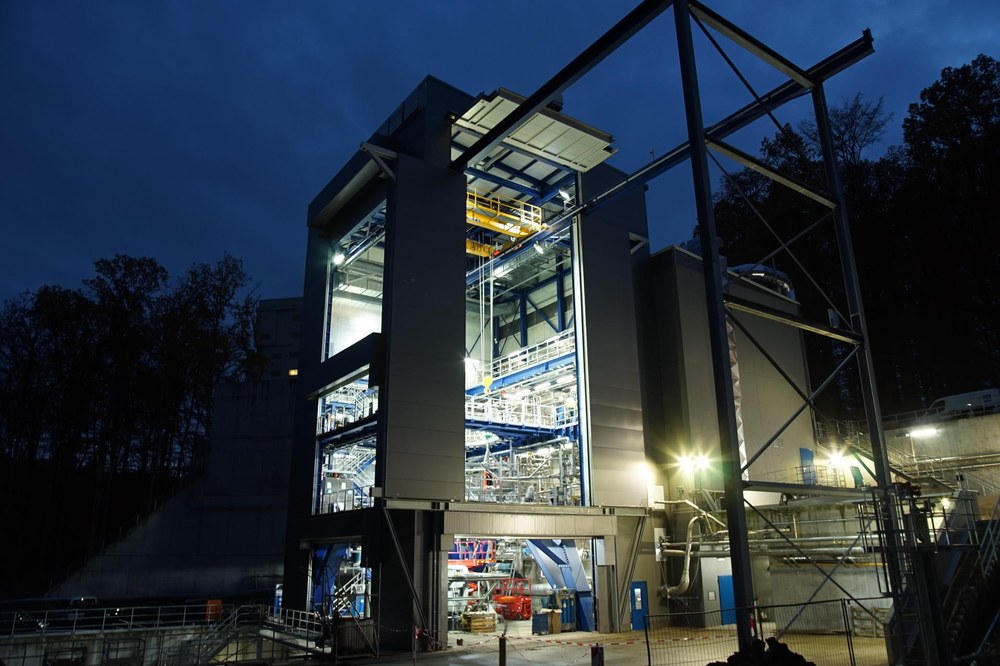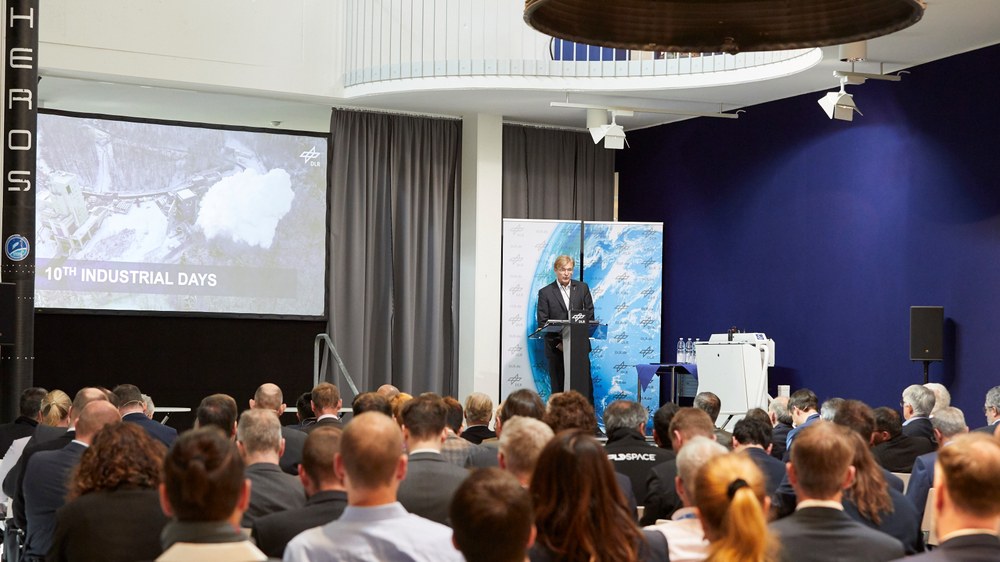Strategies for test infrastructure and launch sites – competitive, flexible and sustainable



- On 25 and 26 April 2023, prominent representatives of the space industry, space agencies and academia met for the 10th Industrial Days at DLR's Lampoldshausen site.
- Preserving Europe's strategically independent access to space and ensuring the competitiveness of European launchers were high priorities.
- The conference participants exchanged views on how test and launch facilities help to address these complex challenges.
- Focus: Space, space transport, launch systems, New Space
Europe has set itself ambitious goals to ensure its continued independent access to space. But the current challenges are more complex, and the launcher market is more fragmented, more international and less standardised than at any time in the past. If Europe wants to secure independent and affordable access to space, new technologies and launcher concepts must be further developed and tested. To achieve this, test and launch facilities must also be prepared for the future. They are an integral part of a sustainable and economic European launch strategy. This was the central theme of this year's Industrial Days, which brought together leading decision-makers from space agencies, space industry and space research on 25 and 26 April 2023 at the German Aerospace Center (Deutsches Zentrum für Luft- und Raumfahrt; DLR) site in Lampoldshausen.
Europe's space transport: increasing demands, new opportunities
Technological independence and sovereignty in space transport are indispensable for Germany and Europe. This was emphasised by Anna Christmann, Federal Government Coordinator of German Aerospace Policy, in her video message to the 10th Industrial Days and drew attention to the challenges facing the Federal Government in this field of technology: "Securing strategically indispensable access with the Ariane launcher, while reducing costs, and at the same time creating conditions that also allow new companies to develop and hold their own in this difficult environment are top priorities."
Strategic test infrastructure for current and future space transport systems
"The launch sector is undergoing a transformation. To strengthen our access to space in future, we need bold concepts and exceptional innovations that will make our future space transport systems competitive. Cost-effective, scalable and future-proof solutions and technologies are at the forefront. This also applies to test facilities such as the one here in Lampoldshausen. Therefore, it was a correct and important step to also recognise this location as part of ESA's strategic infrastructure, alongside the European Spaceport in Kourou. Lampoldshausen helps to secure Europe's access to space, and at the same time is Europe's most modern, flexible and efficient test centre – including for new players in the launcher sector," said Walther Pelzer, DLR Executive Board Member and Director General of the German Space Agency at DLR, highlighting the launch and test infrastructure and its importance for European space transport.
"For DLR Lampoldshausen, being fit for the future does not mean a decision for or against one thing, but rather the skilful cooperation of established and young space actors," emphasised Stefan Schlechtriem, Director of the DLR Institute of Space Propulsion. "With this flexibility in the test infrastructure, we are creating the basis to remain the most important and efficient European research and test centre for liquid propulsion systems and stages of all sizes and specifications."
Small rockets – big market potential
A number of new players have entered the space stage with the boom in the microlauncher sector. Beginning in the USA and China, this development has now reached Europe. More than ten companies on the continent show great potential to leave a sustainable footprint in this sector. Three of these, HyImpulse, Isar Aerospace and Rocket Factory Augsburg, are based in Germany. In the German Space Agency at DLR's microlauncher competition, German start-ups initially received funding totalling 25 million euros through ESA's Boost! programme. In return, the young companies must develop and offer launch services commercially. To this end, the two winners of the first and second main rounds – Isar Aerospace and Rocket Factory Augsburg – will each launch several small satellites weighing approximately 150 kilograms into space with the first two flights of their new microlaunchers. These payloads were selected via the payload competition, which was closely linked to the microlauncher competition as part of the Small Satellites Initiative. With the leading subscription to Boost! Element 3 at the 2022 ESA Council Meeting at Ministerial Level, Germany, as programme leader, continues its strong commitment to the sector. Under the Flight Ticket Initiative, additional launch services will be competitively procured from start-ups in association with the European Commission.
"With the microlauncher competition, we have triggered commercial activities in the European launch vehicle landscape, which has so far been heavily dominated by large companies and government development programmes. In this way, we have paved a cost-effective commercial path into the launch services market for SMEs with innovative ideas and concepts. The fact that the ESA Member States decided at the recent ESA Council at Ministerial Level to open up the transport of ESA payloads to privately financed European launchers is another step on this path, which will have a lasting impact on European spaceflight and also open up Europe's largest payload market to the already successful German microlauncher companies. The third successful round of financing has helped the first microlauncher competition winner, Isar Aerospace, to raise over 300 million euros in total funding. This example shows that private financing of space start-ups is indeed possible in Europe. We are already looking forward to the first rocket launches of the microlauncher competition," explains Walther Pelzer.
Test stands for space propulsion – customisation on a large scale
For more than 60 years, DLR Lampoldshausen has geared its research and testing activities to the needs of the European launch market. Today's test stand portfolio reflects these requirements. Thanks to its flexible, efficient and scalable test infrastructure, the Lampoldshausen-based DLR Institute of Space Propulsion is shaping a smooth transition to future propulsion systems while making the best possible use of existing infrastructure and know-how.
"It is not only new development and manufacturing methods for engines and engine components that determine success in space transport. The overall operation of the optimised test structures, which enables highly efficient development up to operational readiness, is also important. For safe, independent and affordable access to space, we must not rest on structures of the past. In Lampoldshausen, we already have all the necessary facilities to test both the Ariane 6 and the future space propulsion systems of small launch vehicles at our test stands. Further optimisation is nevertheless urgently needed," concludes Stefan Schlechtriem.
